In a short interesting conversation I had with some friends, I came across a discussion regarding powercreep, its causes, and the general interactions within cards of the game. The conversation began while observing a match between two friends: one of modified English Slime and that of English Chainsaw Man with Aki. The Slime player highlighted that it was seemingly unfair that the Chainsaw Man player had access to two overbearing advantage cards with that of 0/0 Power and 0/0 Makima which I’ll reference below.
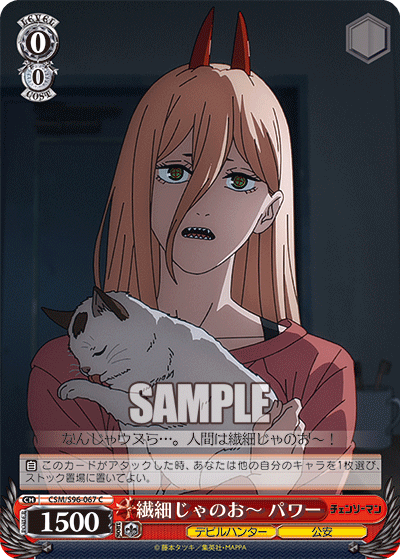

Firstly, before moving into this topic, I want to dispel two myths. For one, rarity has nothing to do with the power of a card. Rarity only influences the pull rate of a card within product ratios. Being a double rare has nothing to do with the power of a card as a whole compared to that of a common. Furthermore, a deck doesn’t function as solely a pile of high rarity cards. Secondly, the profiles distributed are not uniform in every series. Even within clones of profiles, various nuances exist and slight changes that do affect the utility of these profiles, not to mention the specified decks that players decide to run.
Power’s profile, though not widely named, has existed in the game for some time. The reality of Power is that its ability isn’t really new. The ability to sack another card on swing and send it to stock has been around. See the case for Arifureta with the Yue on the right. She performs the same thing. However, there is a catch. Yue can only send characters with a specific name to stock, Hajime [ハジメ]; whereas Power may send any character to stock when she swings. This slight difference, however small, has large implications. The design of Yue makes it so that to take advantage of her ability, the player running her in their deck must contain many characters with Hajime in their name in their deck. This is non-negotiable. However, in the case of Power, any character can be sent to stock, making her extremely potent in any build. This type of profile is especially strong if you’d like to turn reversed characters into another resource.
Now, another perspective must be taken to look at these cards in-depth in terms of the decks they are featured in. Power, according to the Aki deck, turns many of the deck’s low powered characters and level reversers that have no waiting room ability into extra stock. Power doesn’t generally have any demerit considering that the cards that she would send to stock would have done nothing if they entered waiting room anyway. For Power and the deck she is most featured in, there are effectively no downsides. However, for Yue, the story changes significantly. Unlike Power’s deck, Yue won’t necessarily send many of her Hajime targets to stock. This is due to a plethora of reasons. Firstly, unlike Chainsaw Man’s Aki deck, which generally runs many level zero cards that swing freely expecting to be reversed, Hajime has quite a few cards that are meant to stick on field or have large amounts of power to hold ground. Secondly, some of Hajime’s cards do carry sent to waiting room abilities and also field utility that you may want to take advantage of. For Yue, the choice to stock Hajime or not is much more complicated. In addition to this, the card pool size for characters with Hajime specifically in their name is also relatively low. To put it simply, taking advantage of Hajime requires more complicated lines of play compared to running Power and eating up any reversed card.

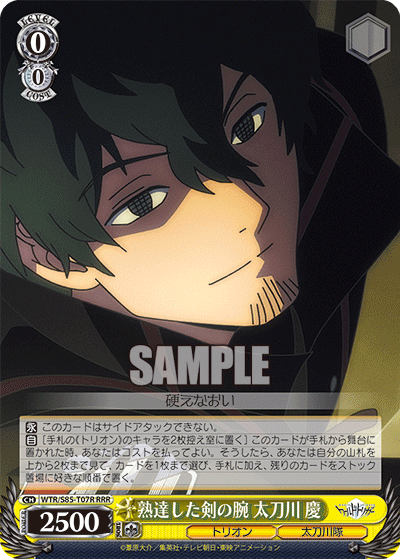
The other card mentioned by my friend was that of Makima on the left. For those unfamiliar, Makima effectively turns two characters in hand into either one card in hand and an extra stock or two extra stock if you choose a different line of options. This is an extremely powerful effect, but this was not always as good as you may think. Firstly, this card is not necessarily new. As shown on the right, this type of profile has existed in older sets. However, here’s the catch. If this card was shown to a player back in 2014 or so, they may have just scoffed at the card. The most common option would be to charge a single stock and nab one card to hand. The other option would have been inaccessible to most decks simply due to the lack of hand gaining options back in the day. However, in 2024, the game is very different. Hand gain has become rather excessive to the point where going overhand is, quite strangely enough, a common sight. Makima instantly churns the extra hand that would have been discarded anyway into more advantage for the player.
All in all, what is the purpose of the showcasing Makima? Makima herself is still a relatively expensive gamble, especially in the early game where sculpting your hand can be quite a challenge that partially relies upon luck. Makima doesn’t necessarily mitigate this luck, but she doesn’t add much consistency either since the top two cards are random and the fact that you must pay her costs first. I think Makima is a good demonstration of how players’ opinions on cards can change drastically over time and more so how the direction of the game can change the efficacy of certain profiles.


Relating back to both Power and Makima, there is one aspect that I want to clearly state. This was more so mentioned for Power, but this is also evident with that of Makima. Makima, compared to Kei from World Trigger, offers the ability to discard characters of two separate traits compared to that of Kei and his single trait. In all honesty, this doesn’t really matter since every card in the Chainsaw Man set, if not all cards, are of either trait for Makima. This also does apply to Kei too. However, given that the set for Chainsaw Man can be split into both traits, Makima does potentially offer more opportunities. This is huge, especially when it comes to consistency. And that is the point that I want to make here. Both Power and Makima are extremely consistent whether it is activating the costs for their abilities or applying the effects of their abilities. These cards can be effectively ran in any deck with little to no demerit.
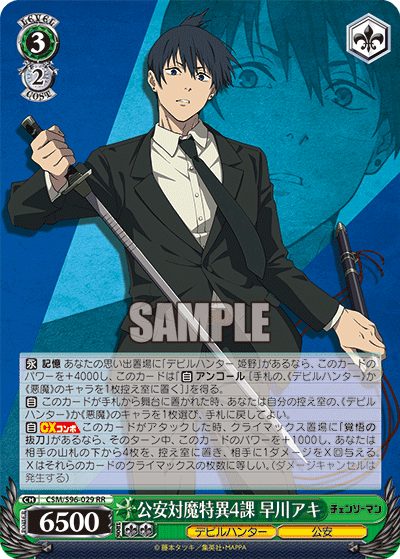

Don’t get me wrong. Having either Power and/or Makima won’t necessarily contribute to directly giving you the win. However, access to these profiles can heavily influence the game in your favour. Furthermore, the lack of any deck building restraints openly lets you place them in any deck you want. Especially when you consider finishers like the above Aki that have no conditions or costs, these cards work extremely well in conjunction to create absurd amounts of filter and/or advantage and in quite a consistent manner as well. These cards essentially act as enablers and over the top advantage pushers.
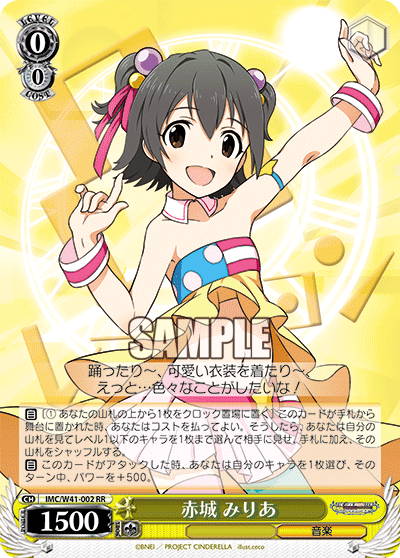

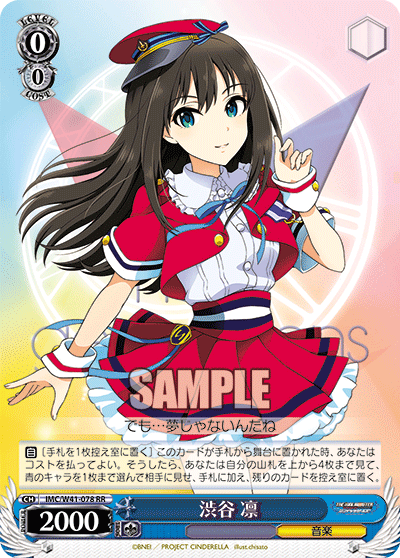
IMC/W43-086R ホラー大好き 小梅 (center)
IMC/W41-078RR 渋谷 凛 (right)
One commonality between all these enabling cards is the overwhelming amount of advantage they bring whether in filtering or simply making hand/stock without a climax combo. One other thing to mention is that almost all utility profiles are all at level zero, meaning that you can splash them into any deck without any demerit. They often have no requirements essentially, letting you use them as generic staples for any deck of that series. In fact, the power of these cards is what I believe to have really given one of the most powerful sets back in its heyday its overwhelming dominance in the game.
Take a look at Idolm@ster CG’s dominance here with this article.
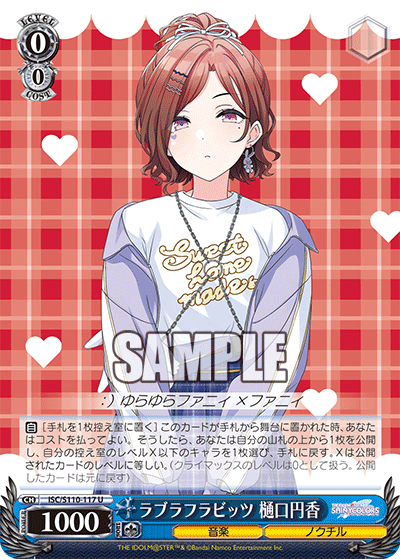

Given extremely power profiles that readily and easily fix your hand for free or give you large amounts of extra value, these utility cards greatly aid in the consistency of your deck, allowing you to lower the chances of hand bricking or having troubles with finding cards to play on field.

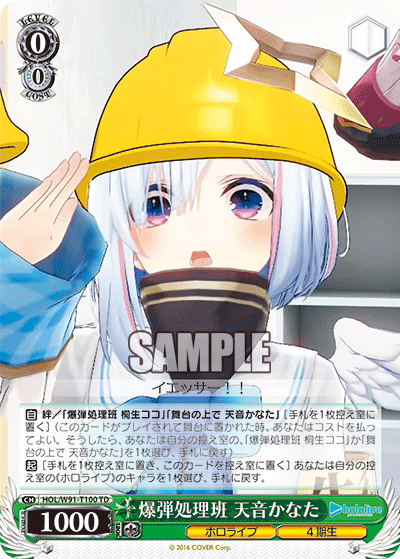
And given how these utility pieces are still being powercreeped today, particularly with the addition of numerous instances of their abilities on the same card or providing double forms of utility, these cards are far simply too good at being enablers for your game plan without any hindrance.
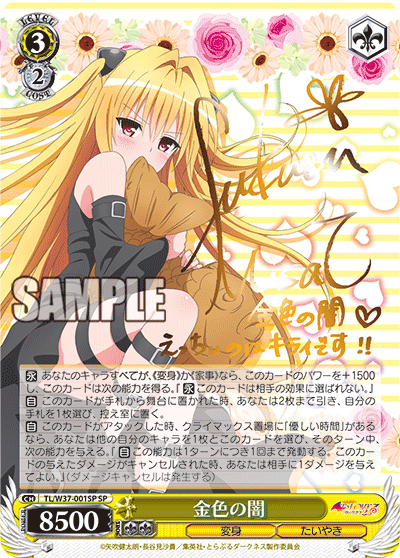

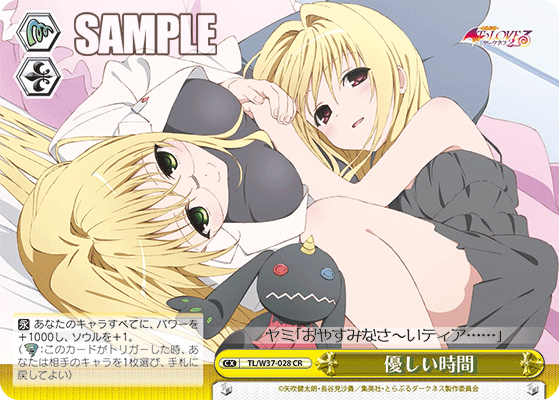
TL/W37-040R “衣服の整理”美柑 (center)
TL/W37-028CR 優しい時間 (right)
So ultimately, what is the point of this post? What is the solution to all this? Should we force the game back into an old format where decks were forced to run cards that would only work given a specific archetype? Well, the answer, at least for me, is quite split. At first, when I spoke with my friends, my immediate response was “no”. Outside of my nostalgia lens, I can clearly remember the janky days and rather generic slump of decks that were all essentially the same. In all fairness, with decks essentially running the same sets of staple piles, it effectively feels the same way regardless today. However, when I thought about it more carefully, it is important to remember that the archetypal and theme builds from back in the old days are nothing like decks today. Theme decks are nothing like what they were a decade ago. Modern decks, even for specified themes, have a lot of leeway in regards to the various cards that they can employ. That being said, this isn’t exactly a universal rule of design. Furthermore, not all utility pieces are especially egregious or overpowered. Should Bushiroad print clones of every profile in every archetype? That would cause other problems in and of itself. In fact, would that not essentially repeat the problem with the current state of the game just with different archetypes?
That then begs the question: would moving the game back to its prior state benefit the game? That’s not an answer I can particularly answer. This is a difficult question which I don’t think any two people can universally agree upon. However, what I can say is that the amount of overwhelming utility in the game, especially the universal utility, is a quintessential part of the problem in the game’s current iteration.
The bottom line is that these utility pieces are far too powerful and add too much consistency, are far too easy to splash into any deck, and are frequent enablers that cause unhealthy lines of play and designs.
Feel free to read previous thoughts on the game as well here in an interview with a previous English Weiss Schwarz Champion, Ryan Wibberley.